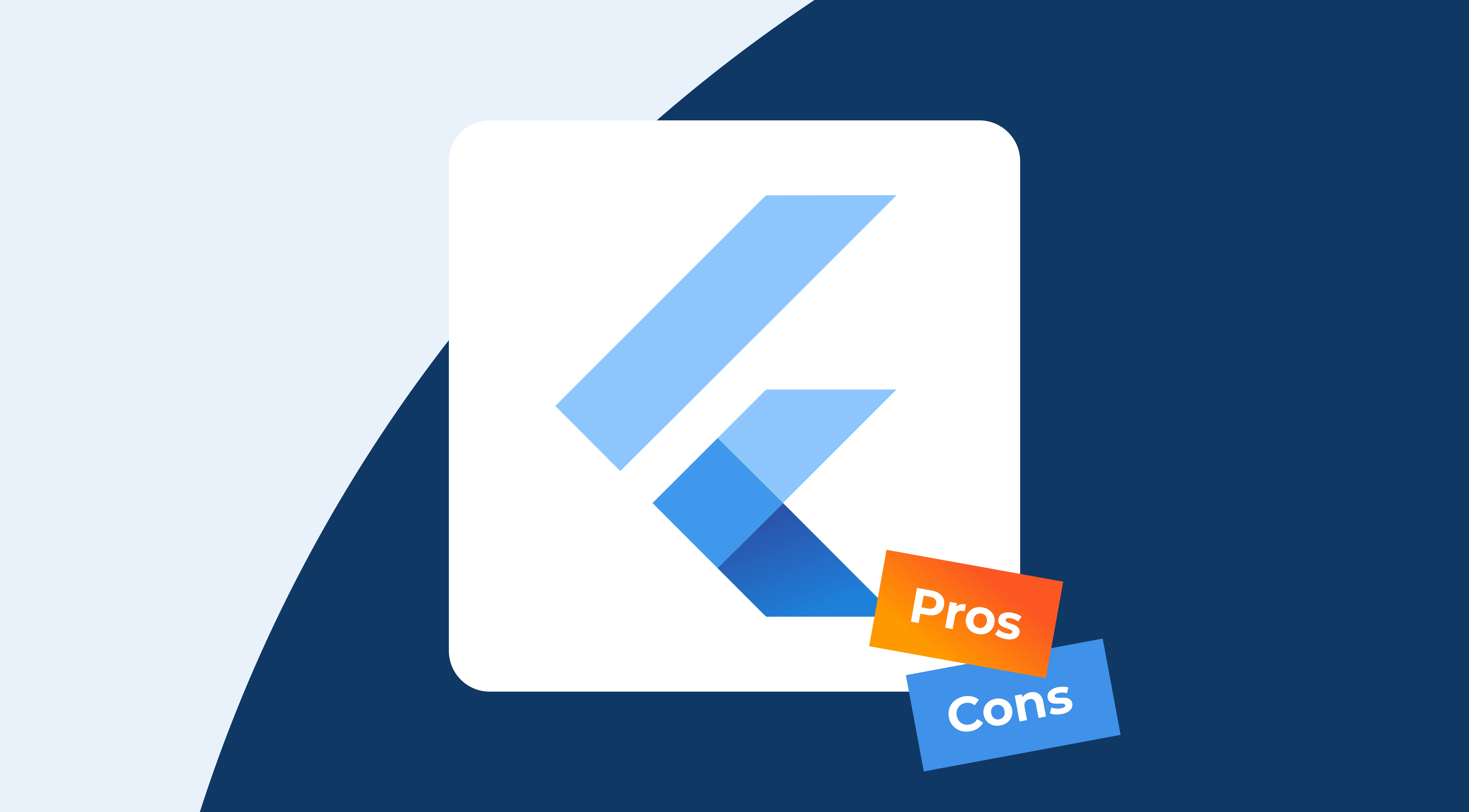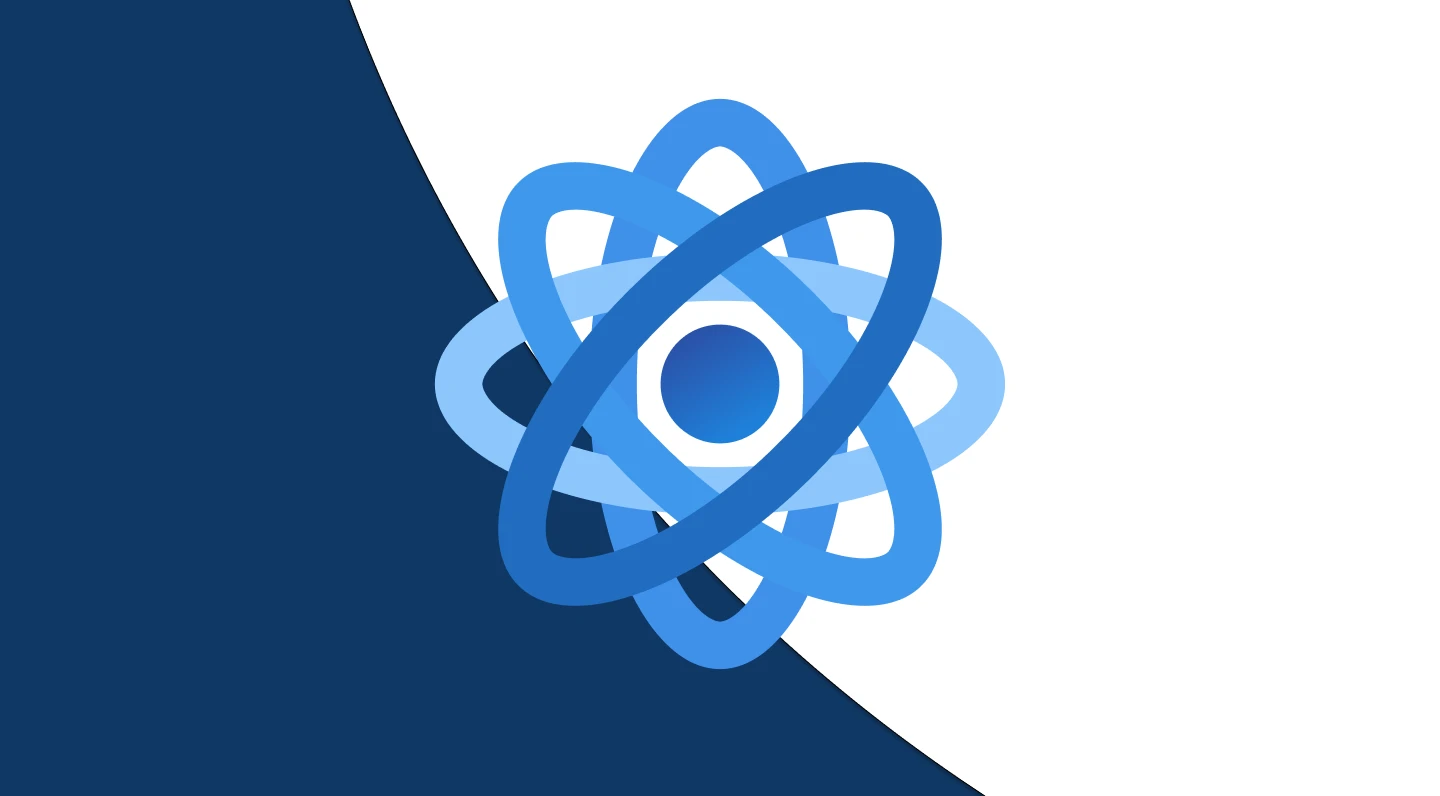maintenance services
SHARE
Flutter Pros and Cons: Is Flutter Worth It in 2024?

Contents
Contents
Introduction
Flutter is arguably the most popular framework for cross-platform mobile app development. Aside from the time and resource-saving qualities of cross-platform development over native app development, Flutter offers a number of advantages to speed up the app development process.
What is Flutter?

Flutter is a cross-platform app development framework built upon the Dart programming language and focused on delivering mobile, web, and desktop applications from the same codebase, and delivering intuitive, performant, and elegant user interfaces. Dart is an object-oriented programming language with a C-style syntax and is primarily used for front-end interfaces. Flutter consists of two key elements, a software development kit with tools to help translate code to native machine language and built-in testing tools.
Flutter enables not only mobile app development for Android apps and iOS apps from a single codebase but also supports desktop platforms and web development.

Strengths of Flutter
Flutter stands out in the realm of cross-platform mobile app development. Its defining feature is the ability to use a single codebase across multiple platforms, including iOS, Android, web, and desktop (MacOS, Windows, and Linux). The upcoming Flutter version 4 further enhances desktop development support.
Flutter’s Comprehensive SDK
Unlike typical frameworks or libraries, Flutter provides a comprehensive software development kit (SDK). This SDK equips developers with tools for both front-end and back-end development, supporting a variety of programming languages like JavaScript, Java, C++, and Dart. Key features include:
High-Performance Rendering Engine
Flutter’s performance closely mirrors that of native apps, thanks to its high-performance rendering engine that uses the 2D canvas SKIA. Unlike other cross-platform frameworks, Flutter eliminates the need for an abstraction layer between the UI and device hardware, ensuring performance comparable to native Android and iOS app development.
Slick, Intuitive UI Design
Flutter is renowned for its ability to deliver engaging and intuitive user interfaces. It achieves this through a rich set of UI widgets, offering a wide range of functional and customizable components like buttons, text fields, and user input fields. These widgets are available in both iOS (Cupertino) and Android (Material Components) styles, allowing for easy customization and integration of complex UI features.
Speeding Up Development
Key to Flutter’s appeal is its rapid development process. The SDK includes various tools that streamline app delivery. Additionally, Flutter’s hot reload feature enables immediate testing of minor changes in the app UI without full recompilation, significantly accelerating the development cycle.
Weaknesses of Flutter
Introduction to Flutter’s Strengths and Weaknesses Flutter, as a cross-platform framework, offers significant advantages, but it’s important to recognize that its weaknesses are often situational and stem more from the app development ecosystem rather than the framework itself.
Programming Language: A Double-Edged Sword Flutter’s unique programming language is a potential weakness. While not inherently flawed, its limited use outside of Flutter development makes it challenging to find expert developers. This contrasts with the wider job market for languages like JavaScript, used in numerous other frameworks.
Software Maintenance Across Platforms React Native’s approach to interfacing with native components through a JavaScript bridge has implications for app maintenance. In contrast, Flutter requires vigilance in updating both Material Components and Cupertino widgets for iOS and Android, making maintenance potentially more complex.
Compared with Ionic: Trade-offs in Cross-Platform Development Ionic, an older cross-platform solution, emphasizes rapid development across multiple platforms using web interface technologies. However, its performance, especially in UI rendering, lags behind Flutter and React Native.
Flutter’s Approach to UI and App Size Flutter’s comprehensive approach involves its own UI canvas, components, and rendering engine. This can lead to larger app sizes but also enables performance comparing Flutter apps to native apps.
Framework Prescriptiveness and Creative Constraints Flutter’s nature as a full-fledged SDK, not just a framework, can sometimes be prescriptive. It dictates key design decisions, tool choices, and specific workflows, which might limit the creative process freedom in app development.
When is Flutter Appropriate?
Flutter app development is a strong choice for multiple use cases, but an especially strong choice for MVP development and Startup development teams. Flutter app development services are perfect if you need to stand up the basic functionality of an application quickly, and if you have a limited budget. This is because:
Flutter is appropriate for situations where you are starting net-new as well. If you do not already have significant development time invested into JavaScript or other solutions, and you wish to create a new ecosystem of applications across mobile, desktop, and web, leveraging Flutter technology might be the fastest way to set up an integrated solution across all platforms.
Because of the typical advantages of cross-platform solutions, Flutter is appropriate for almost any project in which you wish to develop cross-platform applications. It is a strong contender for almost any project that React Native is suited for and a better choice for performance than web technology-driven solutions like Ionic.
When Should Flutter be Avoided?
There are a few situations where Flutter may not fit your organizational needs. There are use cases where cross-platform app development is not suitable, of course, notably if you need both performance and a lightweight app. For cross-platform software development, the key reasons to consider alternatives to Flutter depend largely on your current technology stack investment, as well as the resources you have available.
For example, if you have yet to build a team, and are under a time crunch to deliver a product, it can be difficult to form a team on short notice of Flutter developers. If you have a team already, then development is generally quicker, as we’ve already noted its suitability for MVP development. If you do not have a team already but still wish to consider Flutter, it may be time to consider nearshore staff augmentation services.
If you are significantly invested in JavaScript-based solutions, including React.JS, or back-end solutions like Node.js, then React Native can deliver the cross-platform capabilities you need to integrate well with your existing infrastructure. Chances are, the developers involved in these projects will have the skillset necessary to tackle the current cross-platform project.
React Native may also be more suitable for projects in which long-term maintenance and sustainability are of primary importance. It can be more difficult to find developers to fill gaps in a Flutter team, and to find top-end talent to manage and maintain Flutter projects. Plus, while Flutter is well-supported by Google, and has a relatively strong community, the relative obscurity of Dart programming language, the smaller package repository for customizations, and Google’s tendency to abandon projects means that there is no guarantee that Flutter will maintain its forward momentum. For example, a flagship project built on Flutter technology, Google Stadia, was recently shut down by Google. While this was certainly through no fault of Flutter, it can lead to a perception of instability. This is the hill that every up-and-coming technology must climb, and in this case, being “over the hill” may just be a good thing.
Summary
Using Flutter to develop cross-platform apps is more than just a safe bet, it is a strong choice that can save money on development far beyond simply delivering cross-platform capabilities. It is a newer technology, and as such, has fewer dedicated and experienced development experts, but it is easy to learn and can deliver mobile applications, as well as web and desktop applications, in a cost-efficient and timely manner. It is particularly helpful for MVP projects in which you wish to demonstrate an idea to app owners very quickly. Flutter and React Native are the two top cross-platform technologies on the market today, with good reason, and there is a good reason that Flutter continues to gain ground, and by many metrics is surpassing the popularity of the incumbent player.
Flutter App Development Experts
Create visually stunning and functionally robust apps with Flatirons' Flutter development services.
Learn moreFlutter App Development Experts
Create visually stunning and functionally robust apps with Flatirons' Flutter development services.
Learn more
Software Outsourcing Market: Ultimate Guide 2024
Flatirons
May 08, 2024
What Is Code Churn?
Flatirons
May 07, 2024
The Best IDE for React Developers
Flatirons
May 06, 2024
Refactoring vs. Rewriting Legacy Code
Flatirons
May 05, 2024
What is React or React.js? A Guide in 2024
Flatirons
May 04, 2024
Software Development in Colombia: Ultimate Guide in 2024
Flatirons
May 03, 2024